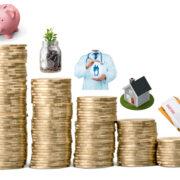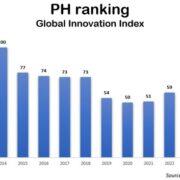In a news release issued on Tuesday, September 1, Department of Finance Secretary Carlos Dominguez III said the Philippine peso has emerged as among Asia’s strongest currencies even amid a pandemic-induced global economic downturn as a result of the country’s mild inflation rate and a balance of payments (BOP) surplus reflected in its record-high foreign currency reserves as of June this year.
As of September 1, the peso equivalent of the US dollar was PHP48.48 based on the reference exchange rate bulletin of the Bangko Sentral ng Pilipinas (BSP).
Compared to the January 2 rate of PHP50.8 to USD1, the peso appreciated by at least 4.5% against the dollar.
Dominguez said confidence in the Philippine economy and the local currency are also among the factors that have raised the value of the peso against the US dollar.
The drop in the country’s imports as compared to its exports during the strict lockdown imposed by the government to contain the spread of coronavirus disease 2019 (Covid-19) has led to an overall favorable BOP position, which contributed to the strong performance of the peso, Dominguez said during the recent virtual “Captain Speak” series of Maybank’s Invest Asean Conference 2020.
“(Second), because we were able to tap the foreign loans first from the multilateral agencies and then later from the bond market at very favorable terms, we have increased the size of our foreign reserves. In fact, our foreign reserves now is at roughly USD94 billion. This is actually larger than our total foreign debt,” Dominguez said in response to a query on why the Philippine peso has remained strong amid the Covid-19 crisis.
The Bangko Sentral ng Pilipinas (BSP) reported an overall BOP surplus of USD80 million in June 2020, a reversal from the USD404 million BOP deficit recorded in the same month last year.
This favorable BOP position is reflected in the unprecedented amount of USD98 billion in gross international reserves (GIR) as of end-July 2020.
The high GIR level is equivalent to 8.9 months’ worth of imports of goods and payments of services and primary income, and is about 7.5 times the country’s short-term external debt based on original maturity.
If based on residual maturity, the GIR is 4.9 times the country’s short-term external debt, according to the BSP.
On top of these factors, Dominguez said the Philippines’ low inflation rate of 2.7% as of July this year also contributed to the rise in the peso’s value against the US dollar.
“Our inflation rate is relatively mild. And I think people have confidence in the Philippines, in the currency. If I’m not mistaken, it’s only the Philippine peso and the Japanese yen that have actually appreciated in values since the beginning of this year. And now actually ours has appreciated by 3.4% or thereabouts,” Dominguez said during the forum held via Zoom last August 10.
In addition to the Philippine peso and the Japanese yen, only the Taiwanese dollar and the Chinese yuan remained firm against the American dollar, while most other Asian currencies have weakened.
To stimulate the economy, Dominguez said consumer confidence needs to improve as 70% of the country’s growth is consumption-driven.
“What we want to do is support consumption; get money back in people’s pockets so that they can spend,” he added.
Dominguez said restoring consumer confidence requires people to have jobs, which is why the government is going ahead on President Rodrigo Duterte’s centerpiece program “Build, Build, Build,” as infrastructure investments have the largest multiplier effects on the economy and creates a lot of jobs.
The government has restarted the “Build, Build, Build” program amid the pandemic, subject to strict compliance with health and safety protocols to protect workers from Covid-19.
Dominguez said the Duterte administration will “redouble” its efforts to protect the economic gains it has achieved over the past three years, prepare the economy for a strong recovery, and drive the country back on the road to high and inclusive growth in the face of the coronavirus-induced global health and economic crisis.






